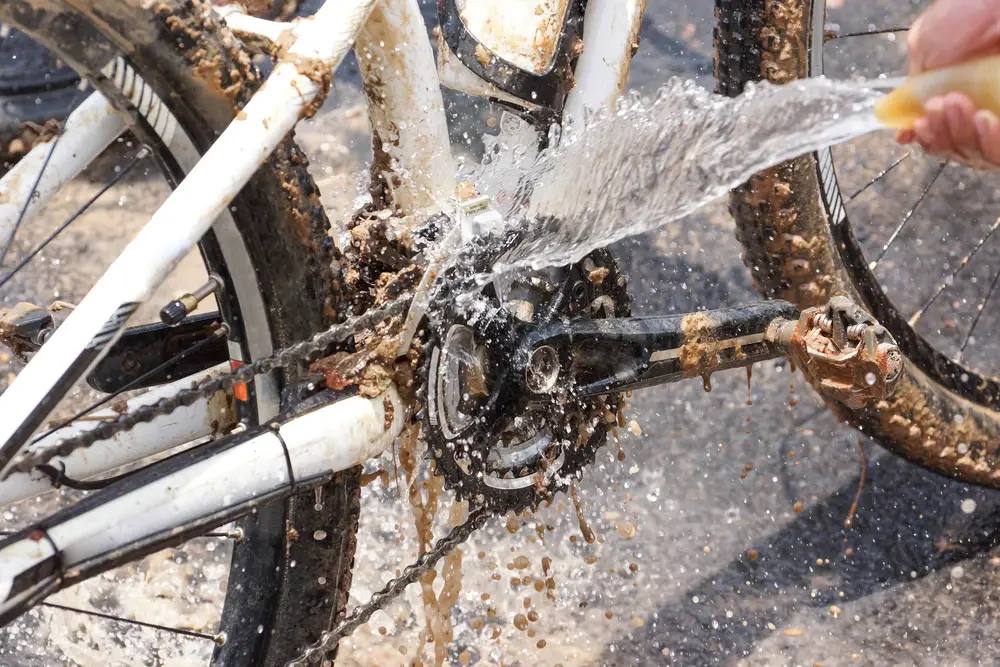Ditch your car for short rides and reduce your carbon footprint with an ebike.
E-bicycles have been on the scene for a few years now and are a great way to get around town. The truth is, cycling in all its forms is more popular than ever.
Cycling can keep you in shape, be an excellent addition to your workout routine, and reduce your overall carbon footprint when you opt to cycle instead of drive. Nevertheless, looking specifically at e-bikes, you may have noticed that e-bicycles are practically everywhere across the globe. However, the concept is not new; since the early 1880s, people have been designing e-bicycles in one form or another.
As time passed, the e-bicycle was perfected and patented. Today’s motorized bicycles are a seamless work of ingenuity and are worth considering.
If you are interested in purchasing or renting a battery operated bike, however, it is beneficial to know what you are doing; once you do, it is like riding a bike–pun intended. Even if you have had the pleasure of riding an e-bike before say in another city or on vacation, you may still have a few questions now that you own one, which is only natural. The good news is you have come to the right place. Not only will we go over the basics, but we will also cover standard electric bike maintenance and service.
Intro to E-Bicycles
An e-bicycle, in many ways, is a standard bike with a few extra bells and whistles. It is easy to think of e-bikes as something akin to an e-scooter until you see one. However, these bicycles are not quite scooters either. E-bicycles use standard or manual bike parts yet have the inner workings of a motorized scooter. In other words, the four key components of an e-bike are its battery, electric motor, frame, and brakes. Obviously, the engine or motor is a crucial feature.
Moreover, these types of motors can be found in three possible spots on an e-bike—on the front hub, mid-drive, or rear hub. The front hub motor is located near the front tire and propels/pulls the bike forward. Similarly, the rear hub provides momentum from the back tire. Here, the rider is pushed forward instead of pulled or propelled like the front hub design.
Finally, a mid-drive motor sits in the centre of the bike frame and provides power to what is often referred to as the bike’s drivetrain. For those who need a quick refresher, the drivetrain is essentially power plus torque, which is typically provided by the rider with a regular bike. Here, with a mid-drive motor, the power and torque come from the engine itself, making it easier for the cyclist to peddle.
How It Works
That said, e-bikes work in two distinct ways. If you choose a pedal-assist bike or electric assist, then you essentially have an on/off control on the handlebars that allows you to add a little extra power to your peddling.
In general, an electric pedal-assisted bike offers various levels of cycling support—low (30%), medium (50-60%), and high (100%). The pedal-assisted bike is a class 1 e-bicycle, which means it can reach up to 20 miles per hour. The other option is electric-only or full power, as the name implies, this e-bike is powered by these types of motors fully, which is usually engaged most of the time. As a result, you can sit back and enjoy the ride. Here, you just turn on the bike and hold the throttle down until you need to stop or choose to peddle.
The electric-only bike has two different classifications—class 2 (low-speed, up to 20 mph) and class 3 (full-speed/throttle, up to 28mph). Note, per Federal regulations, these types of bicycles top out somewhere around 20 miles per hour. Both types allow you to manually pedal regardless of class (some North American brands do not require you to pedal, however), which means your e-bike is all you need.
Types of E-Bikes
Though there are only two types of motors for e-bikes, just like standard bicycles, you have a few design/frame options. In fact, there are four common e-bicycles you will see out on the road these days—street/road, mountain, tricycle/pedicabs, and folding battery powered bicycles. Street/road e-bicycles do not offer a ton of power as they were designed to move around a city. Thus, these particular electrical bicycles provide superior acceleration and high-performing brakes to help cyclists navigate busy streets and traffic lights.
A word of caution with street/road e-bicycles, make sure your city allows you to use them in bicycle lanes or paths—most cities vary on whether or not it is legal to be riding a motorized bike in standard/manual bike paths and designated lanes.
E-mountain bicycles are yet another popular design/frame option. Mountain bicycles that are motorized are known for having more power and better battery life. Similarly, tricycle/pedicabs are also electrically powered nowadays, making it easier for drivers to take people (generally tourists) around big and busy cities. These motorized bicycles typically offer more speed.
Lastly, the folding e-bike is basically a heavier street bicycle that can be folded up and carried into stores, onto trains/subways, etc. Other kinds of motorized bicycles to keep an eye out for are cruiser bikes. These particular bicycles are a vacation staple, and you can often find them in touristy spots.
How to Operate an E-Bike
Clearly, operating an e-bike is not too difficult once you get the hang of it. Furthermore, if you choose to rely more on your own manual pedalling, then operating an e-bike should be a breeze. Most engines or motors use anywhere from 400 to 750 watts of power, which translates to roughly .5 to 1.005 horsepower. With this kind of power, at your disposal, you can quickly get up to speeds of 40 miles per hour with little effort on your part.
In addition, to having ample juice to keep you going places, you can also recharge your bicycle by pedalling, which is great on those super long rides. Note, though this method comes in handy in a pinch, it is much more practical to charge it via a wall outlet—this typically takes only two hours.
Lifespan of Bike
Now that you have a more in-depth understanding of e- bicycles, you may be wondering how long they last for? Well, it depends on several things.
If you go with a pedal-assisted bike or riding your full-throttle bicycle in a pedal-assist mode, you are often looking at approximately a lifespan of 10,000 to 30,000 miles. Having said that, your e bike has a greater chance of lasting up to 30,000+ miles if you take care of it. Proper e bike maintenance is crucial to your motor’s longevity. In fact, your e bike’s engine is likely to last longer than the rest of the bicycle, which may seem odd at first. But, when you think about it, it makes sense.
Even with an electric-only bicycle, you are not necessarily running your e bike’s motor 24/7. What’s more, the motor or engine does not have to overcompensate for weight, as its sole function is to provide a little extra power and torque when needed. As a result, you are far more likely to replace your brake pads, chain, tires, and so on before you even need to worry about the motor itself.
The Best E-Bike for You
Before getting into how to maintain and service your e-bicycle, if you have yet to purchase your e-bicycle, you may want to go through a quick pros and cons list for each type, design, and class. Doing so will ensure you get the most use out of your bicycle as well as the most bang for your buck.
In general, e-bicycles range from $400 to $2,000+. Of course, depending on the riding experience you are ultimately looking for, you are more than likely to spend a minimum of $1,000 or more on a quality e-bike. Keeping that in mind, you can narrow down your options by first deciding how much pedal assistance you are looking for. Once you have that figured out, you should choose a motor type that makes the most sense for your biking habits.
If you are looking to take your bicycle off-road into the mountains and down steep hills, you should consider a mid-drive motor. Alternatively, if you are just looking for a more effortless commute to work or around the city, then either a rear or front motor is ideal.
As briefly mentioned, front hub motors work best on flat land, whereas rear hub motors are great for steep city streets and rainy city weather conditions. Other deciding factors should include, overall style, sitting position, battery life, mileage off of a single charge, power, and max speed.
Maintenance Tips
Along those same lines, if you are still in the market for an e-bicycle, another important thing to think about is servicing your bicycle or servicing e-bicycles in general. Types, brands, and classes of e-bicycles all require different levels of upkeep.
Additionally, you need to ask yourself if you are capable of performing said e bike maintenance as well as covering the cost of general repairs. Even if you are able to handle your e bike’s upkeep, you should not rule out professional assistance. Thus, to keep your ebike running for longer and your warranty intact, remember that anything with moving parts should be looked over by an e-bike specialist, i.e., leave the more complicated electric bike maintenance items for the experts who have experience in servicing electric bikes.
Of course, you are more than qualified to deal with everyday bike issues like a flat tire, a broken chain, or squeaky disc brakes. Nevertheless, the reality is your bike maintenance has complex parts that will, at some point, need expert care. Therefore, it is highly recommended that you first and foremost, find a reputable bicycle shop in your area.
Bear in mind; you need a bike shop that has experience dealing with e-bikes; this will give you peace of mind for future e-bicycle servicing. Moreover, not all motorized bicycle repair shops service all brands, so do your homework here when searching for electric bike servicing.
Outside of major repairs, to properly maintain your bike, a few tools and products always come in handy like bicycle lube, a tire pump, a tire pressure gauge, a bicycle repair stand, and a standard tool kit. Start with the basics, like paying extra attention to your tire pressure.
Properly inflated tires on any bicycle are a must, but on e-bikes, the frame tends to be bulkier, and you have additional weight because of your motor. So, your tires and tire pressure need to be in tip-top shape, and you should check them regularly and before long rides to upkeep your ebike service. If you need to change or replace a tire, you should be able to. Likewise, your replacement tire(s) should be for e-bikes, and we suggest that you replace them every 2,500 miles.
Note, specific tires for e-bicycle service provide better tractions, have sturdy sidewalls, and are puncture-resistant.
Drivetrain/Chain, Gears, and Brakes
You should also keep an eye on other vital e-bicycle components like the drivetrain, chain, and brakes. Regularly cleaning and oiling your chain, for instance, will ensure you have a smooth ride. Plus, cleaning your e bike’s chain is fairly easy—all it takes is some warm water, a small brush (try an old toothbrush), and a good scrub. Once clean, thoroughly dry the chain, lightly lubricate it with the correct oil, and use a damp cloth to wipe away any excess.
Don’t forget to consider your brake components as well when you are inspecting, replacing, or even sprucing up your chain— a quick wipe down of your disc brakes with pure isopropyl alcohol tends to do the trick. Remember, other vital bicycle components like your gears may need maintenance from time to time as well. So, if you feel like your gears need to be adjusted, do yourself a favor and have a professional get you squared away.
Moreover, while you are getting your gears adjusted, you might as well have your e-bikes specialist check out your brakes. Since there are several types of e-bike brakes, having a professional assess your brake pads and tend to any issues, will ensure that your replacement pads and rotors are the correct ones, or that the problem is fixed right the first time.
The same is true for your drive system; an e-bike mechanic needs to work his or her magic so that repairs are up to manufacturer standards. That said, actual electric parts or bicycle components do not require maintenance, but if they need to be serviced/repaired, you know what to do now.
Keep It Clean
Overall, it is important to clean your bike from time to time, especially if there is caked-on dirt, mud, and debris. However, e-bicycles cannot just be sprayed down with a power washer. In fact, you should never use a power washer to clean your e bike.
Remember, you have electrical components, a motor, and connections that can easily be damaged if they are not cleaned with care. Therefore, before cleaning any part of your bicycle, remove your bicycle battery, display, and make sure to cover the controls. Mild detergents or soaps are best, and you can use a garden hose once you have removed the components mentioned above.
After a good cleaning, make sure you completely dry off your bicycle to prevent rust, and when no longer in use, store your bicycle in a cool, dry place, so it is protected from the elements. Try your best to shield your bike from the elements when transporting as well.

How Do You Look After an Ebike Battery?
Last but not least, do not forget to show your bike battery some regular T.L.C. This means properly charging, storing, and operating your bicycle with care. For instance, e-bikes are at their best at roughly 90 RPMs. This cadence will ensure you do not prematurely wear out your battery or drivetrain.
Furthermore, your e bike’s battery is lithium-ion and, thus, low maintenance. However, you should still charge your battery in accordance with the manufacturer’s instructions. Most manufacturers agree that charging your battery fully before each use will extend the life and ensure you have a pleasant riding experience.
Also, it is highly recommended that when charging or storing your bike, you do so at room temperature and out of direct sunlight, to protect the cells inside your lithium battery. Note, it takes anywhere from 3.5 to 6 hours generally to charge a fully-depleted one, and a brand-new one normally has 500 full charge cycles before it can no longer be charged to full capacity.
Final Note
E-bicycles are an excellent option for anyone looking to get outdoors and try their hand at some serious cycling. These modern wonders are fast, flexible, nature-friendly, and easy to buy. They also help improve your health, reduce expenses, and come in a variety of styles/designs. So, you should not let a little e bike maintenance or service scare you off. Ultimately, e-bicycles are the future of transportation, and they free you from continuously having to pedal—sounds like a win-win.





